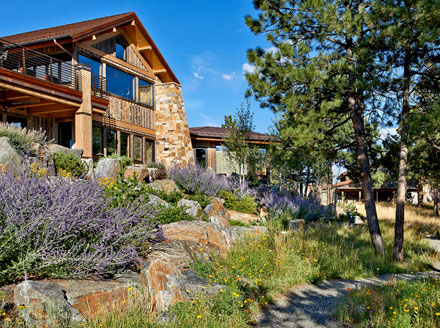Share This Post:
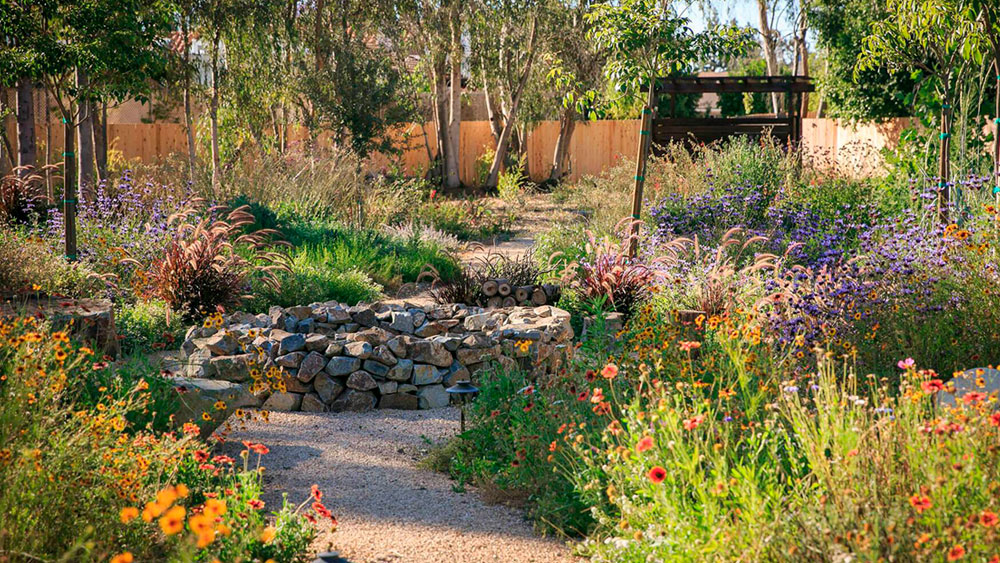
Image Credit: Eco Minded Solutions
Xeriscaping - Plant Zones
Xeriscaping - Plant Zones
This is post 4 of 7 in the series Xeriscaping Isn't Just For The Desert
This is post 4 of 7 in the series
Xeriscaping For Any Climate
LANDSCAPING | Carolyn Feinstein | June 09, 2020
LANDSCAPING | Carolyn Feinstein
June 09, 2020
So far you've planned your xeriscape, figured out how to amend the soil, and drawn up the drip system, but don't start tearing out the lawn quite yet. We need to go over the fourth principle of xeriscaping - Plant Zones.
This is more than just figuring out what will look pretty in any given area. There are three major concerns that must be considered and addressed when figuring out your plant zones:
- Water
- Sunlight
- Wind
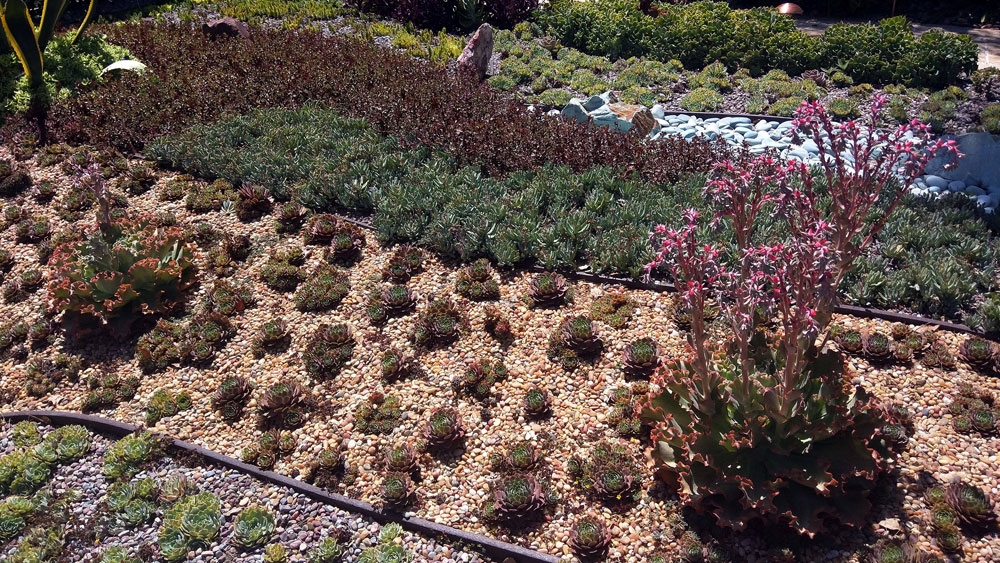
Image Credit: Quesnel Cariboo Observer
Water
Here is where you can put all of that irrigation and soil knowledge to good use. Each type of plant will have specific needs in terms of water absorption. As we discussed previously, native species will most likely need little to no additional water, while non-native will probably require supplementation above normal rainfall. For instance, Autumn Sage (a type of salvia) would be a great companion for red yucca in Texas, as they have similar water requirements, however, planting either of these next to a magnolia tree, which requires much greater quantities of water in the Texas heat, would cause the plants to droop or have a stunted growth from too much moisture (and shade, but we'll get into that next). That magnolia would be much happier with shade-loving plants that can benefit from the extra moisture, like hostas or ferns. The plant groupings will allow you to easily determine the different zones needed for your irrigation system ... a drip here, a bubbler there.
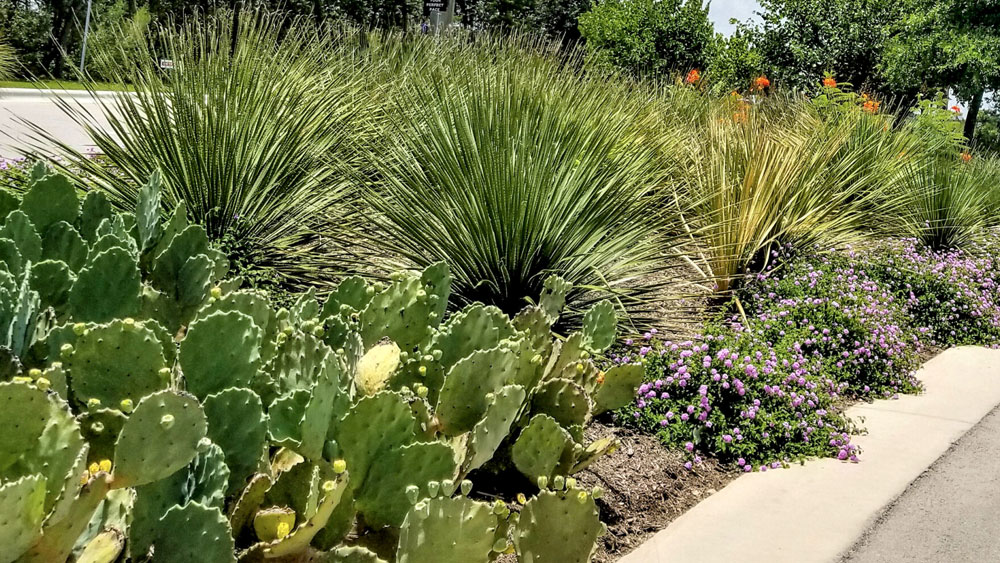
Image Credit: Woodlake Outdoor
Sunlight
Although you want to group plants with similar moisture needs, you also want to consider the sunlight requirements for each plant within that group. Too much or too little sunlight can kill your carefully chosen plants if they are not placed with light in mind. Looking at our previous example of the magnolia tree and hostas, these plants coexist successfully because the magnolia bears the brunt of the sunlight while the canopy of the tree provides partial shade to the hostas. If the hostas were to somehow overwhelm the height of the magnolia, the tree would suffer from lack of sunlight. When selecting plants for sunlight, consider the shade they can provide or receive from the surrounding plants. Grouping full-sun xeric plants works well when they have ample space between them to avoid shade from one to the next. Altering the height of your grouped plantings can layer the light exposure, like the magnolia and the hostas.
Another important factor for assessing sunlight is the shadows cast by the surrounding structures and existing trees. Your new house may look like full sun on plan, but the height of the exterior walls, or even sunlight shining through the windows to the opposite side of the house, can alter the amount of light exposure for your xeric plants. If you have planned expansive windows, consider the reflections and how that has the potential to burn your plants. One useful tool I like to use is a sun study. We provide these to clients to assess sun exposure on both the interior and exterior of their new home, any time of day, and any time of year. Moving around the house in 3D, we can see if the 2-story entryway will provide sufficient shade for ferns, or if the walls of the study are too high to provide sun to the Japanese Maple in the front yard.
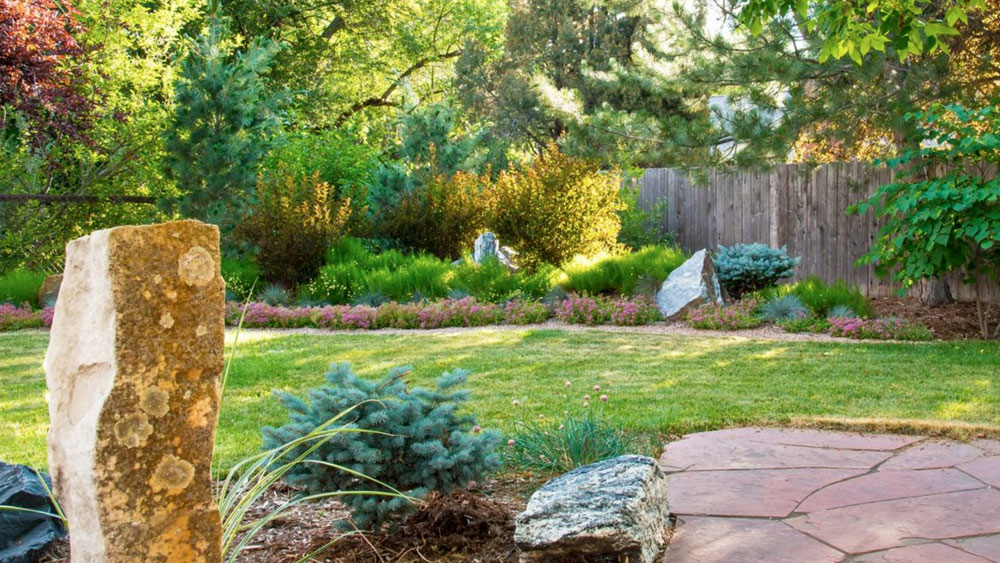
Image Credit: Ecoscape Design
Wind
The last, but equally important factor to creating your plant zones is the wind. The Santa Anas can be majorly destructive to an otherwise well thought out xeriscape. Certain plants, like banana trees, palms, and elephant ears, need protection from strong winds, as this can tear apart the leaves and negatively affect the health of the plant. Planting wind-resistant xeric plants, like shrubs, sage, and native ornamental grasses (please check out the invasive nature of non-native ornamental grasses before you go that direction) can protect your more delicate plants and reduce the amount of clean up necessary after a storm.
Finding complimentary companion plants is the goal to any plant zoning plan. This might mean you have revisit the plant design you created earlier. Allow your plant zones to vary in color, size, and texture. Make sure you are not only creating a smart plan, but a beautiful one as well.




